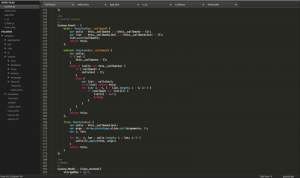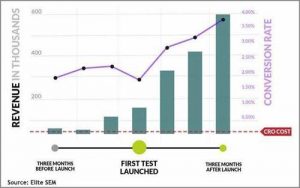
Vector created by pch.vector
If there is one common question I hear senior leaders ask themselves, it is this:
How do I get it all done? How do I stay on top of email, put out the daily fires, develop and support my team, manage my boss, work on strategy, all while attending back-to-back meetings?
Here is what I tell them: You can’t. You can’t do it all. It’s a fallacy.
The second a leader releases themself from that expectation, it is amazing how much more productive they become.
When leaders hold themselves to the “I have to do it all” expectation, they spend an inordinate amount of time thinking about what they are not doing. At the end of the day, they walk through a mental list of everything they didn’t get to, were distracted away from, and forgot. This leaves them feeling defeated and tired and ruminating on that question “How do I get it all done?
A common strategy is to end the day focusing on what was accomplished. A shift in mind-set is powerful.
But sometimes, we must act our way into thinking differently.
Not surprising, there is no silver bullet to productivity and managing overwork but there are some tried and true techniques that have worked well for many. This week, we provide a few strategies employed by real-life professionals (names and industries have been changed).
Perhaps, one or two of these techniques will resonate and prove to be helpful to you as well.
Don’t Land on Your Day
“Mike. You’re good at what you do but you don’t seem to have a plan. You arrive to work and just start motoring through your tasks. While you appear busy, I’m not sure you are making the best use of your time.”
This was the feedback Mike’s boss gave him during a weekly touch-base. Mike had missed a few deadlines and forgotten to follow-up with a client. While his ego was wounded, Mike agreed that he had no strategy or plan for his work. He just worked. He landed on his day.
Mike began starting work 15 minutes earlier and didn’t do anything until he reviewed his meeting schedule and task list to determine his plan. He wrote three “must-do” tasks on his whiteboard above his desk. He couldn’t avoid the whiteboard and was easily reminded throughout the day what he wanted to accomplish. It helped.
While not every day went as planned, he dropped less balls and didn’t miss following up with clients.
Create Structure and Process
Helen is a manager of two hospital clinics where unexpected and urgent issues come up daily. Making a specific plan feels impossible due to the irregularity of the work. Helen also receives nearly 200 hundred emails a day from patients, physicians, employees, and hospital administration. She refers to her inbox as “the beast”. Keeping up with email is the worst part of her job.
While Helen can’t predict when a problem will come up, she decided she could put boundaries around how she handled her email. She dedicated a few hours to clear out her inbox and start fresh. Afterwards, here is what she did:
- Set rules to file newsletters and low priority email to a folder to read later.
- Asked her team to stop sending one word replies like “thanks!”, “great!”, and “ok.”
- Deleted all unneeded emails upon receipt and did so throughout the day.
- Blocked three 20-minute slots daily on her calendar to review and respond to any emails that took less than 2 minutes to handle and filed more complex emails into a “working folder”.
- Dedicated 90 minutes on Friday afternoons to handle the complex emails that required research, analysis, or deeper thought.
This structure gave Helen more control over “the beast.” Sometimes she got off track, and when she did, Helen would put these five rules back in place. It gave her the discipline to manage something that once felt out of her control.
Say No to Notifications
“Ding” “Blip” “Ta-dah!” Notifications are the worst for productivity. While they may notify us of something, they do so by distracting our attention away from our work.
Sean, a Senior Director of Marketing, knew this well. He rarely shut off his notifications and the face of his phone was lined with 7, 8, or 9 notifications at a time. His phone vibrated and chirped all day.
While attending a meeting and glancing at his phone throughout he realized he missed the details of the discussion at hand. When he was asked to give his opinion, he couldn’t. Sean said, “I was so embarrassed because I had no clue in what direction the discussion was going. I made something up, got strange looks, and the meeting moved on, but I don’t want that to happen again.”
Sean took inventory of his notifications and did this:
- Turned off all non-work-related app notifications. No Instagram, Facebook, Twitter, TikTok, news, weather, or music.
- Turned off email notifications but kept text messages. He told relevant parties that if they urgently needed him to text.
- Turned off desktop email notifications, especially the one in Outlook that pops up in the lower right corner with the email sender name and subject. That notification routinely stole his focus.
If Sean’s approach is too extreme for you, select a 2-4 notifications and turn them off for just three days. See what happens and how it impacts your work. Odds are, you won’t want to turn them back on.
Learn Something New
“I can’t stop thinking about work, even when I stop working. It’s like my mind keeps moving from one work topic to another. I can’t turn it off and I’m exhausted.”
This is Lelah, a recently promoted executive adjusting to the new normal of overwork, pressure, and politics. While her workday technically ends at about 6pm, her brain keeps working. When her work thoughts keep going, she can’t help but open her laptop and keep working longer. She knows this isn’t a sustainable approach.
Out of coincidence, she found an activity that distracts her brain out of work mode: learning Italian.
Born in Italy but raised in the US, she always wanted to be fluent. She and her husband had been daydreaming of a trip in the Fall and she began learning and practicing using an app.
She said, “It is amazing. When I listen to Italian and practice out loud, it distracts my thoughts completely away from work. After 30-45 minutes of Italian, I feel refreshed because it’s fun, I’m learning something new, and it’s not work!”
Learning is an integral part of human development, especially learning for its own sake or for pure enjoyment. This type of learning elicits positive emotion, creates engagement, and gives us meaning – all aspects of the Theory of Well-being. Read here to learn more.
Lelah stumbled upon something that gave her joy. When work is overwhelming, stifling, or unfulfilling, doing something that brings joy is a clear antidote.
Mike, Helen, Sean, and Lelah have all found strategies to help them perform, be effective, and manage “all the things”. Half the battle is defining what we need to help us. Hopefully, one of their experiences will help you too.
This article was originally published on the Growth Partners Consulting blog.
Business & Finance Articles on Business 2 Community
(24)









